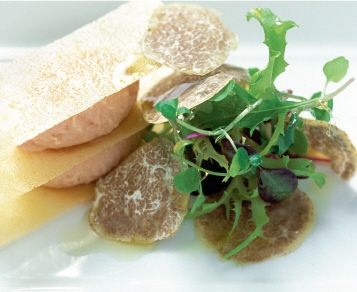
The process of moving fish from a freshwater environment to salt is known as ‘smultifying’; a young salmon going through this transition is referred to as a ‘smult’. World Heritage-protected Macquarie Harbour, where the fish are grown in sea pens, is a mixture of freshwater on the surface and saltwater beneath, a result of the Franklin and Gordon rivers flowing through the harbour out to sea.
As the salmon, trout and char mature, each fish moves instinctively to an area where the salinity is optimal for its own needs. The darker freshwater towards the surface also serves to protect the fish from direct sunlight that causes discolouration. These conditions are ideal for maturing fish in the salmonid family – water that is too saline can cause disease in immature fish gills.
In Australian aquaculture, in order to produce fish all year round, the conditions of the spawning period are synthesised, tricking fish into spawning during the Australian winter as well as in summer.
Macquarie Harbour is known for its penal settlement, Sarah Island, which was used by the government between 1821 and 1832 to house its most dangerous criminals. The now deserted 11-acre island can be seen from the sea pens just off Liberty Island, nine miles out from Smiths Cove where a Sevrup office and net restoration workshop are situated. The sea pens are each weighted with anchors around the circumference of the pens to prevent tidal flow dragging the enclosures and reducing their volume. In twenty metres of water, the seven-metre pens house thousands of fish each. Divers work in the pens twice a week, clearing out any dead fish and monitoring the state of the nets. The lease agreement with the government also dictates that Petuna is responsible for cleaning the sea floor beneath the pens.
Fish are harvested onsite: they are removed and bathed in carbon dioxide which stuns them. By the time the fish regain consciousness, they have been cut open and die rapidly in water aboard the harvesting vessel, before being placed in an ice slurry which keeps the flesh at a temperature of 2°C. Allowing the fish to regain consciousness is a deliberate tactic as their final movements hasten the expulsion of blood from the body. Once in ice, the fish are moved back to land and shipped to Devonport for further processing and then transport around Australia and abroad.
Petuna has recently established a new breed of saltwater char. Also known as Arctic char, this fish is indigenous to northern waters towards the Arctic Circle, and was first commercially fished during the 19th century off Labrador. It is caught in freshwater streams or farmed in saltwater for differing flavour. This versatility also affects flavour; char raised in saltwater yields a deeper coloured and sweeter tasting flesh than its freshwater cousins.

Herbed and marinated ocean trout with lemon sour cream and verbena

Tartare of smoked and raw ocean trout with purple shiso sorbet

Mille-feuille of ocean trout brandade with a salad of shaved white Alba truffle